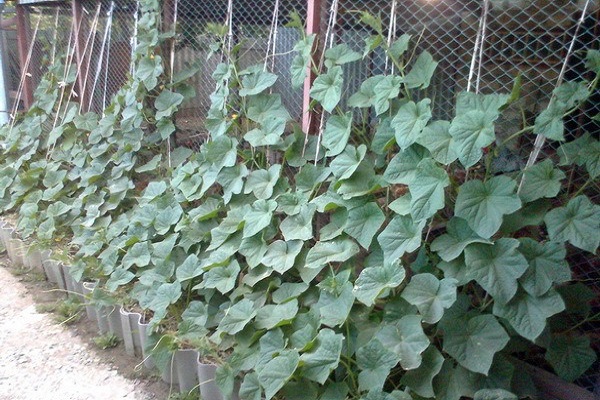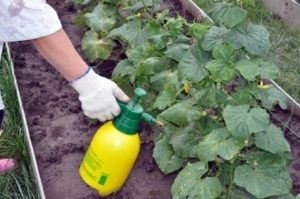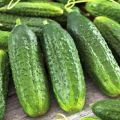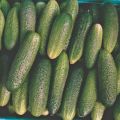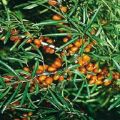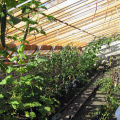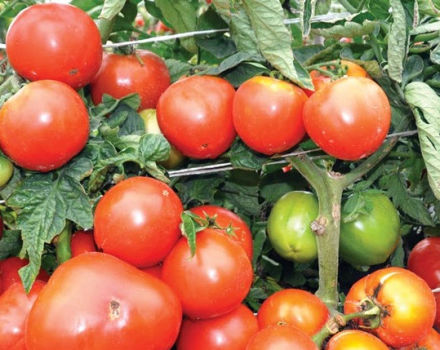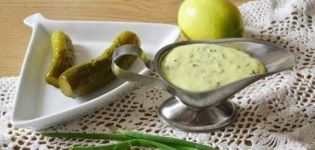Description of the Break cucumber variety, its characteristics and yield
Cucumber Break is a hybrid created by the breeders of the Gavrish company. The plant is loved by gardeners: with minimal effort, it is possible to get a good harvest. Cucumbers are delicious in salads. Children love crunchy sugar fruits. Housewives receive aromatic canned food for the winter.
Why do gardeners choose Break?
Agronomists offer different varieties and hybrids of cucumbers. Break stands out because of its features. Gardeners appreciated the characteristics of the vegetable:
- early ripening (fruiting occurs 43 days after germination);
- designed for protected ground (film shelters, unheated greenhouses);
- the plant forms predominantly female flowers;
- does not require insect pollination (parthenocarpic type);
- bears fruit on the central and lateral shoots;
- ovaries are arranged in bunches;
- from 2 to 4 ovaries grow on the central stem in the axils;
- on the side - up to 8;
- medium branching of cucumber tops;
- the central stem extends up to 3-4 m.
Competent agricultural technology provides a yield of up to 8.5 kg of fruits per plant. One square meter gives 17 kg of zelents. The hybrid does not suffer from powdery mildew (false and common), root rot. Gardeners are not susceptible to peronosporosis.

What grows on the bushes?
Early cucumbers have a salad purpose. When trying to preserve, the fruits soften, acquire a sour taste.
Cucumber Break F1 has a universal purpose. The zealous housewives roll up the surplus harvest for the winter. The taste of canned food pleases all family members.
Description of the hybrid Zelentsov:
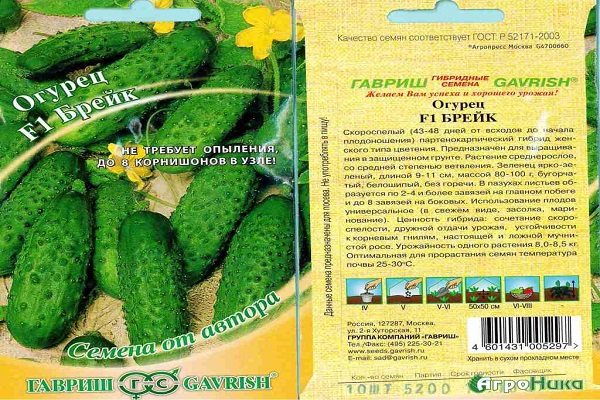
- fruit with sparse white thorns;
- the pulp is crispy, juicy;
- the skin is dense, not rough;
- small seeds;
- grows in length up to 11 cm;
- diameter up to 4 cm;
- the color is bright green with fuzzy light stripes;
- cucumbers grow up to 100 g.
Break's value is the genetic lack of bitterness. Fruits, with a delay in harvest, retain their skin color, the flesh remains tender.

How to provide a family with vegetable products?
Break F1 is an early fruitful hybrid. To get a good harvest, you need to follow the recommendations of agronomists:

- growing through seedlings is more effective than sowing in a permanent place;
- when planting, place seeds in a hole in 2 pieces;
- deepen by 1.5 cm;
- after germination, leave a strong plant (carefully cut the weak with scissors);
- plant 25-day seedlings in a greenhouse;
- a hybrid of cucumbers Break requires a lighted place;
- to land after return cold weather;
- add rotted manure or mature (three-year) compost to the soil (bucket for 2 square meters);
- planting on heavy soils requires preliminary sanding;
- provide moisture in the ground and air;
- blind the first two side shoots in the region of the first leaf;
- tie up the main stem;
- monitor the illumination (pluck out excess leaves and shoots);
- removing the whiskers will force the plant to give strength to ripening fruits;
- before flowering, carry out foliar fertilizing with nitrogen (once every 10 days).
Cucumbers love loose, moist soil. Mulching with cut and dried grass will help to preserve these qualities. In hot weather, containers with water placed in the greenhouse will lower the temperature.
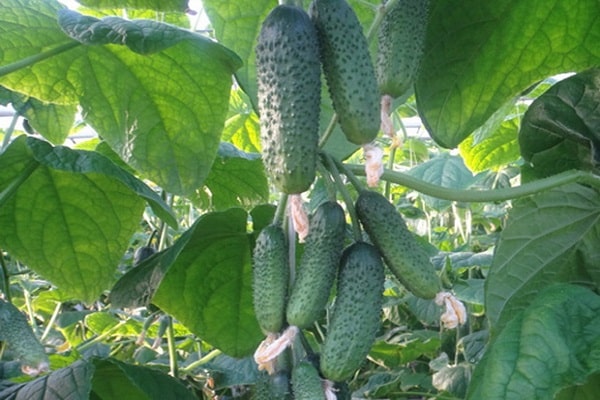
Break is sensitive to drafts. Airing is recommended through the vents. To reduce the temperature, you should whitewash the greenhouse or cover the plantings with lutrasil.
The daily collection of zelents stimulates the formation of ovaries. After the end of fruiting, the lashes should be shortened, the soil should be loosened. Feed the plants with nitrogen: after 3-5 days, re-ovary formation will begin.
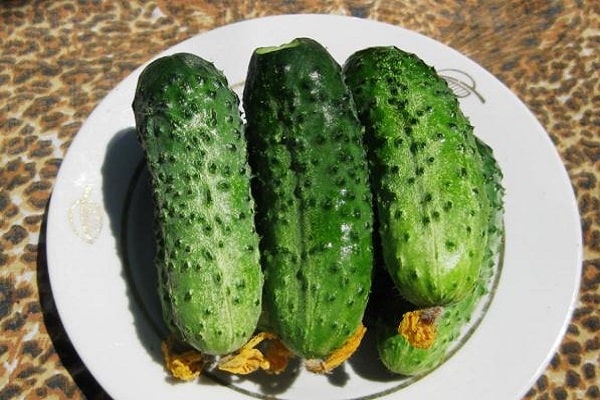
Assessment of summer residents
Gardeners give good reviews about Break. We liked it: yield, uniformity of zelents, taste, universal purpose of fruits. Especially summer residents noted the lack of bitterness in cucumbers and extended fruiting.
One drawback was revealed - from the hybrid it was not possible to get its seeds.
